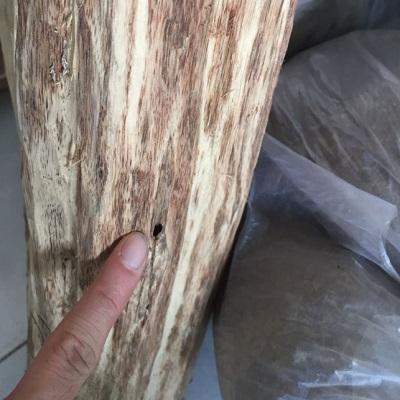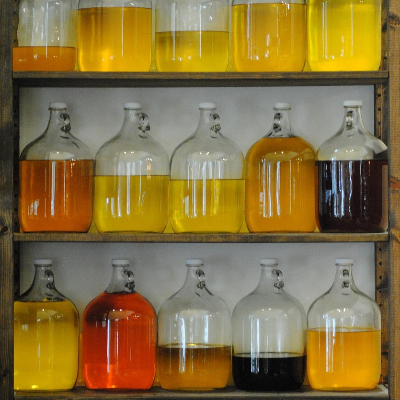Menu
-
-
F.A.Q
- How to identify genuine agarwood chip, natural or cultivated
- How to identify oil injection / absorption fake agarwood beads
- How to know if there are more than one oil in your oil
- How to make your wood bracelet or mala darker
- How to tell if an Agarwood bead sinks WITHOUT sinking it under water?
- How does back flow incense work and how do you burn it?
- Where to start if you don't know what agarwood is ?
- Why are you losing money if you buy seeds and plants?
- Which agarwood incense should I choose?
- Frequently Asked Questions
- Agarwood Related Articles
- Shipping
-
SHOP - Agarwood
-
SHOP - Other Fragrant Wood
-
SHOP - Incense Holder and Burner
-
- FREE Oud Oil guide
- Testimonials
- "Why did you buy this?"
- Contact us
- About Us
- +61430284329
- Login
-
English


Why don't we issue a Certificate of Authenticity?
August 20, 2019 3 min read
For those who are interested in agarwood beads, you would like to find out more, as, by chance, I discovered a question from Antiquers Forum per below which is quite interesting.
https://www.antiquers.com/threads/wooden-necklace-that-sinks.35628/
Let's go back to our question today: why don't we issue a certificate of Authenticity.
Below is an extract from the Internet (we do not name and shame so apologies for not being able to provide the source)

So the above bracelet is being advertised around $7000 USD. What are the problems you may ask?
1) It looks solid
It may be the angle of the picture or the lightning condition. However, if it were genuine agarwood, it would not be solid in colour. See the raw agarwood pieces below

Agarwood beads are making from the above material, which is not solid black. Just for fun, ask the seller a question if you want: to find out why he/she is selling solid beads and let us know the response next time :)
2) They use the big words: "Ky nam" or " Kinam."
Why the word "Ky nam" is a problem: read here.
In short, for $7000 it is too cheap for Ky Nam (Kyara)
But it is too expensive a fake agarwood bracelet.
If you were seeing: Ky Nam, Ki Nam, Kyara, especially in beads, beware.
To give you a brief idea: see the below quote from Kyarazen, a well-respected incense master in the agarwood community (He is the man behind: 2088tea and wemakeincense),
"But in any way to claim that superbly expensive raw material of kyara-kynam types were distilled, it does not make financial sense! At a 1% yield, you will need $500,000 worth of material (if you auction the wood at Sotheby/christies/poly Hongkong or Beijing) for a tola of oil. If sinking grade material, you will need about $50,000 per tola (unlikely though because sinking grade has very little oil). At such margins, even if the vendor can afford the raw material, it makes no sense for the vendor to sell the oud product at a few thousand dollars per 3ml just to regain a small percentage of the cost. If it is charity, why not give the oil away free, since more than 95% of the cost is not accounted for?"
Let's revisit the so-called Ki Nam Beads.


Agarwood bracelets are called or marketed as "Black Agarwood", "Black Eaglewood", "High-quality", "Highly resinous agarwood beads" or the worst " Ki Nam agarwood". When you get your hand on these beads, you will feel heavy.
Agarwood is classified as non-timber wood, it is very soft and light (rarely over 50g for 14 beads of 18mm in dimension).
If you looked closely, could you look at the "grain" or the "island" pattern from agarwood? Or all you see is one solid black colour?
If you are not sure what we are referring to, see the below.

3) The certificate of authenticity
The true is: anyone can make it, it does not mean anything at all. A fake item could also be supplied this certificate. If you wear watches, you would know about these :). Just a piece of paper
So, I am new to these agarwood beads, and want to learn more.
Our mentor used to say this to us: To learn the truth, you only need to study the fact. There are many ways to create fake agarwood beads, but would it help if you know some distinctive feature of the agarwood beads?
We get asked continuously if we have any agarwood beads met the below criteria:
- Darker agarwood beads
- Smell stronger (still subtle)
- More resin (basically, more infectious pattern)
- Genuine agarwood quality
- Environmentally friendly
- Does not cost an arm and a leg
What if we told you that we have all the criteria ready for you, and yes, it is genuine. These agarwood beads are from our plantations.
We received feedback: "it is dirt cheap". Well, we aim to provide value to you, our customers, someone who has never tried these fragrant beads before. Here is your chance, we only have a limited number of these mala, and they are selling fast.
The fact: It takes 12 years to grow this quality agarwood, and it requires a lot of patience to hand-craft these beads. Imagine wearing these genuine agarwood mala; your friends may ask you about its origin, whether it is wild or cultivated.
Leave a comment
Comments will be approved before showing up.
Also in News

What is Tasbih? The Deep Meaning of Subhan Allah and the Role of Prayer Beads
November 09, 2025 4 min read


